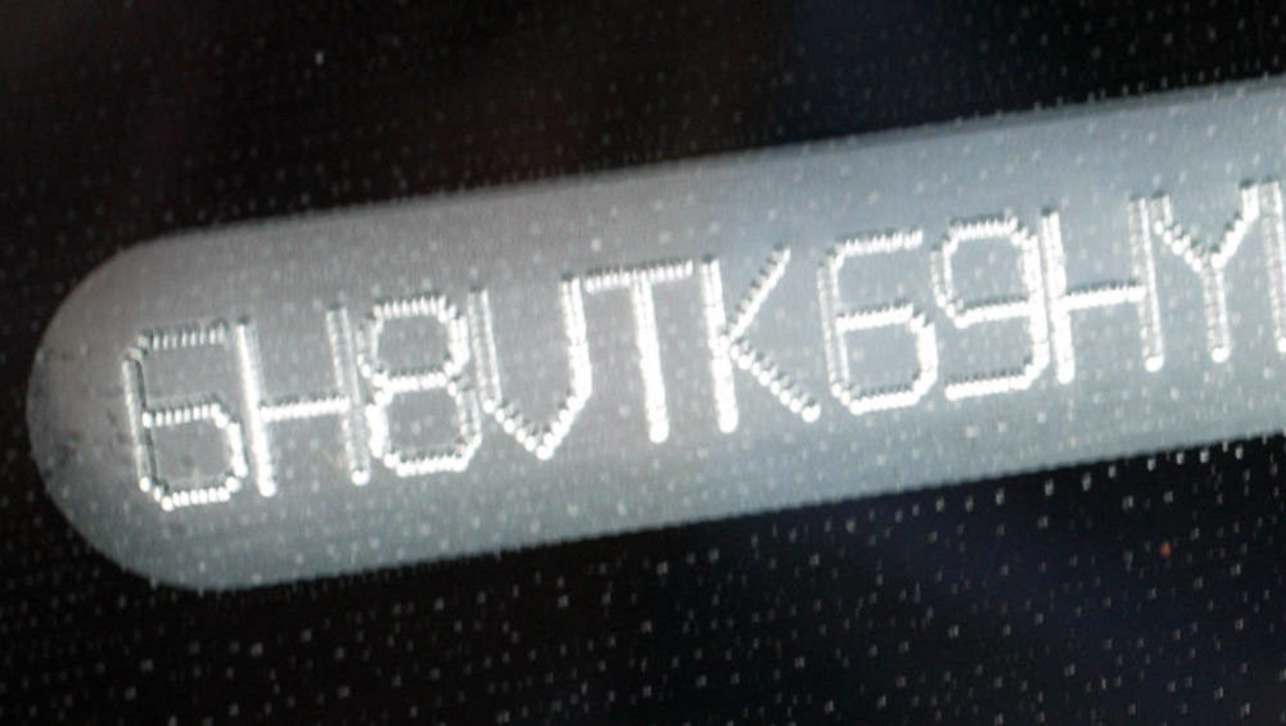A VIN is not a VIN number, for a start, just as an ATM is not an Automatic Teller Machine machine, so if you hear anyone mentioning such a thing, be sure to pedantically pick on them.
A VIN is, in fact, the only number proper car fanatics can't tell you about their own vehicle. They'll spout forth their kilowatts and cylinder counts and zero-to-100 times, but their Vehicle Identification Number is a little too hard core; it's too long to remember for a start.
Introduced in the 1980s by the International Organisation for Standardisation (ISO), the VIN is a 17-character code that, in effect, defines your car – where it came from, who made it, what they put in it and where it sits among its stablemates.
For buying, selling and registering
The VIN's original purpose was to create a unique and criminal-proof identity for each car, so no one would be able to pass a vehicle off as something it wasn't.
VINs are especially important when it comes time to buy or sell a used car. As we explained in our guides to buying and selling financed cars, the car itself is used as security for the loan, using its VIN. This means that even if the car is re-registered with new plates, the loan can still apply to the car itself.
The good news for buyers is that using the VIN, it's easy to check if there's any outstanding money owing on your prospective new car by checking out the Personal Property Securities Register.
You can also check to see if the car has been in any serious accidents that can render the car unsafe and unable to be registered by using the Written Off Vehicle Register.
The VIN has a tricky system where the ninth character is a number that ensures the validity of the VIN itself.
If you multiply all the numbers in the VIN together – except for the number at the ninth spot – then divide the result by 11, you should get a remainder that equals the ninth digit. We kid you not.
The VIN can also yield insights into your car's manufacturing history
The letters are included, too – A is 1, B is 2 and so on. It's exceptionally complicated, deeply nerdy and is used to keep the less brainy criminals out of the car-rebirthing business.
For regular road users, it's something that an automated system calculates when it comes time to register the car. So, unless there's something very shady in your vehicle's past, it's not something to stress about.
History in the making
More than just an identifier for registration, the VIN can also yield insights into your car's manufacturing history.
Each country and manufacturer has claimed a certain sequence of letters or numbers to identify their breed and place of birth.
Italy has the letter Z, Australia has the number 6, Japan is J and so on. So the first character in the VIN will always tell you where your pride and joy came from. The next two digits signify the manufacturer. Alfa Romeo VINs, for instance, will always start with ZAR, while the nearly departed locally-built Holdens kick things off with 6G1.
Here are a few codes from car-building countries:
Japan: J
Korea: K
England: S
Germany: W
Italy: Z
Sweden: Y
Australia: 6
France: V
America: 1, 4 or 5
From there, it drills down even further. The manufacturer will add in the model or chassis code, such as the 937 Alfa Romeo chassis, or F, for the VF Commodore.
After that, the VIN details the standard equipment, such as the engine and interior trim. For classic-car prospectors, this is the all-important calling card that ensures originality and legitimacy.
The VIN is a bit of a quiet achiever
Finally, after a check code that uses complex maths to ensure the VIN is legitimate itself, there's the actual number in the model run. The very first, last or best example of a particular model will have the production number to match; marking them as collectors' favourites.
VINs did exist before standardisation in the 1980s, so this applies to older cars as well. However, as you may have guessed, older VINs won't follow a standard format, so it can be more difficult to ascertain which numbers and letters refer to which bits.
For recalls
Put simply, recalls occur when car makers realise that certain parts pose the danger of failure, affecting the safety of the vehicle and its occupants.
Take, for instance, the recent recalls for Takata airbags or Volkswagen's diesel debacle.
While both issues are far-reaching, there is a finite number of models affected, so how does the manufacturer keep track of which individual vehicles require a recall?
Well, each car's unique identifier – its VIN – signifies where each car fits in the manufacturer's production run, and therefore whether it's affected.
In the event of VW's recall, the company set up a website so potentially affected customers could input their car's VIN and find out the cold, hard truth.
A numbers game
The VIN is a bit of a quiet achiever – it helps to fight fraud, keep you safe and keep your car on the road.
Not a bad job for a few letters and numbers.


.jpg)

.jpg)
.jpg)

.jpg)
.jpg)
.jpg)
.jpg)



.jpg)
.jpg)
.jpg)


.jpg)

Comments